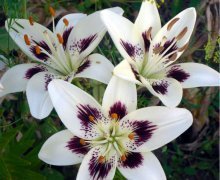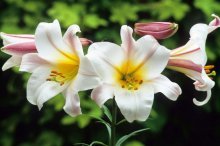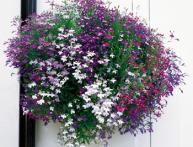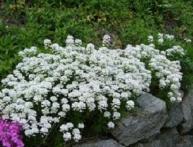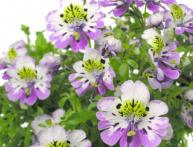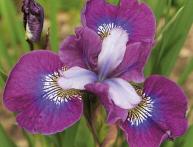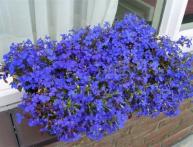When lilies bloom: plant characteristics and growing conditions
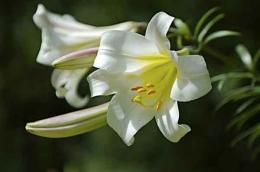
Lily is one of the most beautiful plants that can be found in a summer cottage. There are over 80 species of lilies of varying sizes and colors. To admire the abundant bloom of lilies, you need to properly care behind the flower.
Content:
Description of the plant
Lily is a bulbous perennial plant of the Liliaceae family. The bulbs can be of various shapes, the diameter of the smallest specimen is 1 cm, and the largest one is about 30 cm. The shape is spherical or ovoid. Lilies have a straight, slightly branched and leafy stem. Depending on the variety, the height can reach up to 250 cm.
The inflorescences are cylindrical or cone-shaped. They contain 8-16 flowers. Flowering duration is about 17 days. The flowers have a variety of shapes: star-shaped, tubular, funnel-shaped, bell-shaped, cupped, etc. Depending on the variety, lilies can have different colors: bright scarlet, orange, snow-white, pink, purple, etc. Different varieties of lilies have different flowering times: some species begin to bloom in early June, while others bloom only in July.
Necessary conditions for cultivation
Lilies love light and breathable soil. These plants do not tolerate waterlogged soil well: the bulbs will begin to rot.If the soil is heavy, it is recommended to add a little sand or peat. To increase the nutritional value of the soil, you should add humus - about 10 kg per square meter.
Since lilies are perennial plants, they can grow in the same place for a long time, and there is no need to replant them. Lilies feel comfortable in a sunny, windless area. It is advisable to plant bulbs between low-growing plants. They will prevent the soil and root system from overheating.
It is recommended to plant lilies in the fall. The best time for planting is the first days of October. Before the onset of winter, the root system will be developed and temperature changes will not be terrible. Some varieties can be planted in the spring, when stable warm weather arrives.
Planting: basic rules
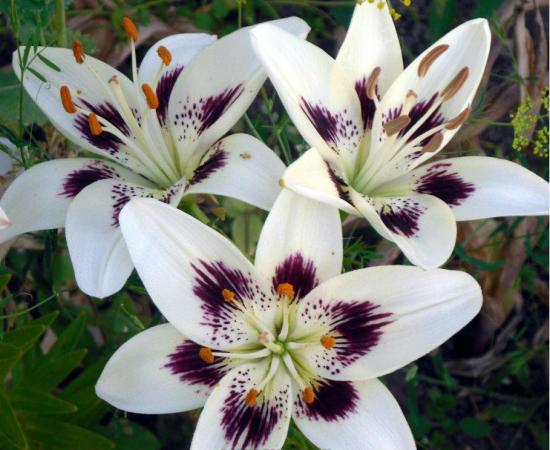
Immediately before planting, it is necessary to dig up the soil and remove weeds. It is important to determine the acidity of the soil and, if necessary, add wood ash or lime. Next, prepare holes about 40 cm wide. Place a layer of sand on the bottom and sprinkle soil. Before planting bulbs, rotten, unhealthy specimens should be selected.
If there are colored scales, they are cleaned and treated with a solution of potassium permanganate. Bulbs can be of different sizes, taking this into account, the planting depth is chosen: small specimens are deepened by 6-7 cm, and larger ones by 10-15 cm. Then compact the soil around the planted bulb and make a small mound, mulch and water. As mulch, you can take sawdust, peat, small pine needles. When planting, the distance between plants should be about 15-20 cm, and for tall varieties - 25-30 cm.
Caring for lilies
In order for lilies to bloom magnificently and develop well, it is necessary to properly care for the plants. Caring for lilies involves performing such activities as timely watering and fertilizers. Lilies need moisture throughout the growing season. During drought, watering at the roots is carried out twice - in the morning and in the evening. This will prevent burns on the leaves.
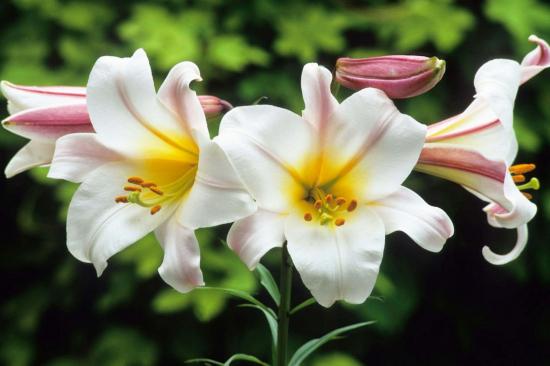
It is important to ensure that the soil is not too wet. If water gets on the leaves, this can lead to their rotting. After watering, mulch the soil. At the end of flowering, watering is reduced, but not stopped. If there is a lack of moisture, lily flowers will be distorted and small. Fertilizers for lilies are applied regularly. It is recommended to feed the plant about 3-4 times per season.
The application of fresh manure prevents the flowering of these perennial plants and stimulates the development of green mass. The first feeding is carried out until shoots form. You can use ammonium nitrate or nitrogen fertilizer.
In summer, plants are fed with wood ash, and with the formation of buds - with a solution of ammonium nitrate. After flowering, cut off part of the peduncle so that the length of the stem is about 20 cm. During this period, the last fertilizing with potassium-phosphorus fertilizer is carried out. Proper feeding and watering contribute to long and abundant flowering of plants.
It is important to remember to regularly inspect the plants and cut off any wilted flowers. Weeds should be removed, and in case of cracks and crusts on the soil surface, loosening should be carried out. Beginning gardeners should know that lush flowering depends not only on proper planting, but also on proper care for plants during the flowering period and after its end.
Video about planting and transplanting lia:

